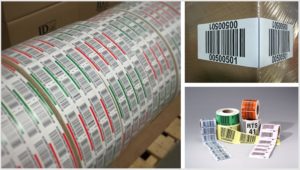Second only to questions about a shop’s ability to run a job is a customer’s need for effective communication about whether their project is on schedule for completion. The ability to meet that need typically starts the moment the product arrives at the shop door. However, within the industry, checking in product is not a standard in every shop. Some retail brands that are available in our industry require this step. Let’s talk about the value proposition for reviewing all inbound stock when it’s first received.
You ordered what?
Whether your shop decides to charge for this service separately or if it is included in the price, efficiencies start at the receiving door. As all suppliers strive for complete accuracy, everyone will make a mistake at some point as humans are still picking and shipping orders. Without this inbound review, there may be costly delays when the box is opened just in time to stage on production day and something isn’t right. Even worse, the team doesn’t realize the mistake and produces an entire run that is now incorrect.
Something is amiss but what?
With every order there is a risk that product may have a manufacturing irregularity or damage from transit, or that you receive the wrong size, number or color. By reviewing inbound product at the receiving door, you can reduce several potential areas of cost that could impact your bottom line.
- Delays in planned production: This could happen because of shipments from multiple warehouses that have a different number of days in transit.
- Dead warehouse staging space staging for additional days until completed.
- Potential for missed deadlines.
- Additional costs associated to resolving issues including but not limited to secondary setup charges and employee time to complete the order.
- Run of decoration on the wrong product (style, color or just sizes).
- Increased customer outreach. Reviewing inbound product significantly reduces customer anxiety. Also, you don’t have to deal with last-minute issues that arise when you don’t confirm the product until just before or right after production.
A path to reduce delays through technology.
The industry is seeing large production houses continue to fine-tune workflow efficiencies. An area of recent focus is at the receiving door and finding technologies that can support scale, speed and accuracy. Whether we start to discuss printing bar codes with production values or separating blank stock from just-in-time bin locations, it all starts checking in product virtually.
When you check in product virtually, you scan a package at receiving for a digital input into a management system. The process is growing in popularity thanks to the availability, reduced costs and need for new efficiencies through implementing workflow platforms. Many suppliers offer a unique “license plate number” (LPN) as a barcode for each package, which allows for increased automation. It is the LPN that allows for a receiving manager to scan each package for expected product without a manual input. With this automation though, a team still needs to visually verify what was received.
The LPN service is traditionally for direct purchases by a business or when a contract decorator is receiving daily manifests for all brokers from the supplier. For those who want to virtually check in product, it starts with your warehouse management platform and the integration team at your desired supplier. These teams can help determine the best path toward using a daily file or making real time requests that are performed in seconds. Whether you have a technology solution in place today or not, it continues to be quintessential to check in all product when received.
For those struggling to identify where or how to start, there are also industry experts who are continually publishing content. Check out a recent article by Marshall Atkinson, an industry veteran and consultant, where you can dive deeper and spend a lot more time assessing your own practices.
